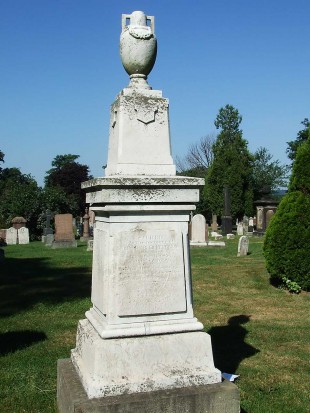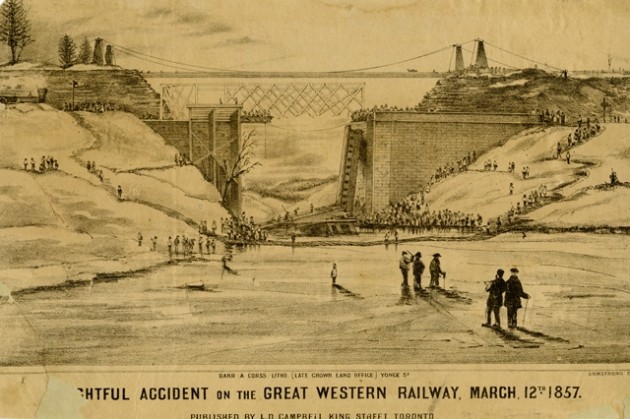…where east meets west
- Home
- Brief History
- The Greenwich Meridian
- Greenwich
(1675–1958) - Herstmonceux
(1948–1990) - Cambridge
(1990–1998) - Outstations (1822–1971)…
- – Chingford (1822–1924)
- – Deal
(1864–1927) - – Abinger
(1923–1957) - – Bristol & Bradford on Avon
(1939–1948) - – Bath
(1939–1949) - – Hartland
(1955–1967) - – Cape of Good Hope
(1959–1971)
- Administration…
- – Funding
- – Governance
- – Inventories
- – Pay
- – Regulations
- – Royal Warrants
- Contemporary Accounts
- People
- Publications
- Science
- Technology
- Telescopes
- Chronometers
- Clocks & Time
- Board of Longitude
- Libraries & Archives
- Visit
- Search
People: John Charles Henderson
| Name | Henderson, John Charles |
||
| Place of work | Greenwich | ||
| Employment dates |
1848 – 30 April 1854 |
||
| Posts | 1848 |
Assistant (Magnetic) | |
| 1852, May 30 |
Assistant (Astronomical) | ||
| Born | 1826 | Baptised 1826, Jun 14, St Georges, Hanover Square, London | |
| Died | 1857, Mar 12 | Hamilton, Canada |
|
| Known Addresses | 1851 | Dartmouth Row, Blackheath, with parents, siblings and brother-in-law, Charles Brydges (census) | |
| 1854 | 5 Dartmouth Row (RGO6/3/120) | ||
John Charles Henderson was born in London where his father John Robert Henderson was a wine merchant. His mother Henrietta was the sister of the Rev. George Fisher, a fellow of the Royal Astronomical Society who, in 1834, became Headmaster of the Greenwich Hospital School. Henderson’s father was declared bankrupt in 1835 and it was around this time that the family is believed to have moved to Leicestershire before eventually returning to London and settling for a while in Blackheath.
As Headmaster of the Greenwich Hospital School, Fisher was on good terms with the Astronomer Royal, George Airy, and it was probably though his influence that Henderson was taken on at the Observatory as a Magnetic Assistant in 1848. At that time, he was one of three assistants working for the Superintendent of the Magnetical and Meteorological Department, James Glaisher. Like the other assistants in the Department, Henderson was also assigned observing duties with the astronomical instruments. In 1848/9, the number of assistants in the department was reduced to just one, with Henderson being the assistant who was kept on. His salary as a Magnetic Assistant was £120 a year.
When Thomas Ellis, the Third Assistant, died on 29 May 1852, his post in the Astronomical Section of the Observatory was given to Henderson. Unlike the Magnetic Assistant posts, the Astronomical Assistant posts were established and essentially a job for life. As the most recent appointee, Henderson was put on the standard starting salary of £100 a year plus a £30 housing allowance and given the official designation of Seventh Assistant. As well as being assigned observing duties, Henderson was put in charge of the galvanic apparatus which was being installed for sending time signals via the electric telegraph and dropping the Time Ball.
Henderson was clearly talented. He was also keen to get on in life and realistic about his prospects of rising rapidly at Greenwich, where the better paid assistant posts were vacated only when their incumbent died. Meanwhile, back in 1849, Henderson’s sister, Letitia, had married the young and ambitious Charles John Brydges (1827–1889), the ceremony having taken place in Kennington and been performed by Fisher. Brydges had started working for the London and South Western Railway in 1842 and by 1851 had risen though the ranks to the post of Assistant Company Secretary before accepting the post of Managing Director of the Great Western Railway in Hamilton, Upper Canada in 1852 at the age of 25. When Henderson subsequently received from Brydges the offer of the post of Chief Clerk of the Mechanical Department at the railway, he accepted. Having tendered his resignation on 7 April 1854, he left the Observatory at the end of that month (RGO6/3). He was succeeded by Charles Todd, a former Greenwich Computer, who at that time was employed as the Junior Assistant at the Cambridge University Observatory. Henderson was not the only family member to join Brydges in Canada. Not only did Brydges recruit two of his other brothers-in-law to work for the company, but also his sister-in-law, Frances Henderson, ended up marrying his Paymaster, George Herve Mingaye.
Towards the end of 1854, Airy was approached for his advice about securing a suitable candidate for the post of Astronomical and Meteorological Observer, and Head of the Electric Telegraph Department in South Australia. Airy had no hesitation in recommending Henderson. Henderson however turned the offer down, so the post was offered to Charles Todd instead. Todd is widely known today as the man who connected South Australia to the rest of the world via the telegraph system. He was knighted for his services.
As for Henderson, his progress was rapid. He resigned his post with the Great Western Railway in August 1856 to join the Cyclops Iron Works. Tragically, he died the following year on 12 March 1857 in one of Canada’s worst rail disasters when the Great Western train in which he was travelling derailed while crossing the timber swing bridge over the Desjardin Canal outside Hamilton and fell 40 feet into the frozen canal below.

Henderson's grave at Hamilton Cemetery, Ontario, Canada. Photographed August 2010. Photo courtesy of Julia Elcock
Obituary
An obituary was included on pp.12–13 of Full details of the railway disaster of the 12th of March, 1857, at the Desjardin Canal, on the line of the Great Western Railway (1857). For an alternative copy in colour, click here.
Further Reading
Desjardins Canal Disaster Illustrations (from Local History & Archives, Hamilton Public Library)
The correspondence between Airy and the Government of South Australia regarding the appointment of their Astronomical and Meteorological Observer, and Head of the Electric Telegraph Department was published in the Proceedings of the Parliament of South Australia (1855)
Acknowledgements
Special thanks to Julia Elcock who provided some of the details about Henderson’s wider family and the photograph of Henderson’s grave. Also to Local History & Archives, Hamilton Public Library, who kindly provided the image of the Desjardins Canal disaster.
© 2014 – 2025 Graham Dolan
Except where indicated, all text and images are the copyright of Graham Dolan
